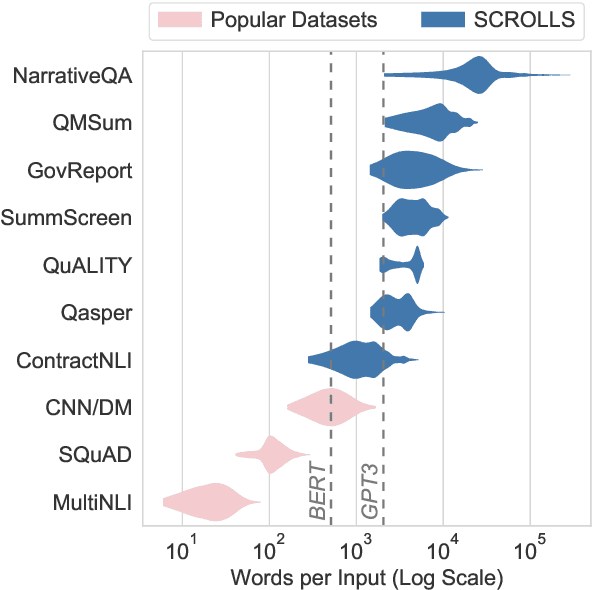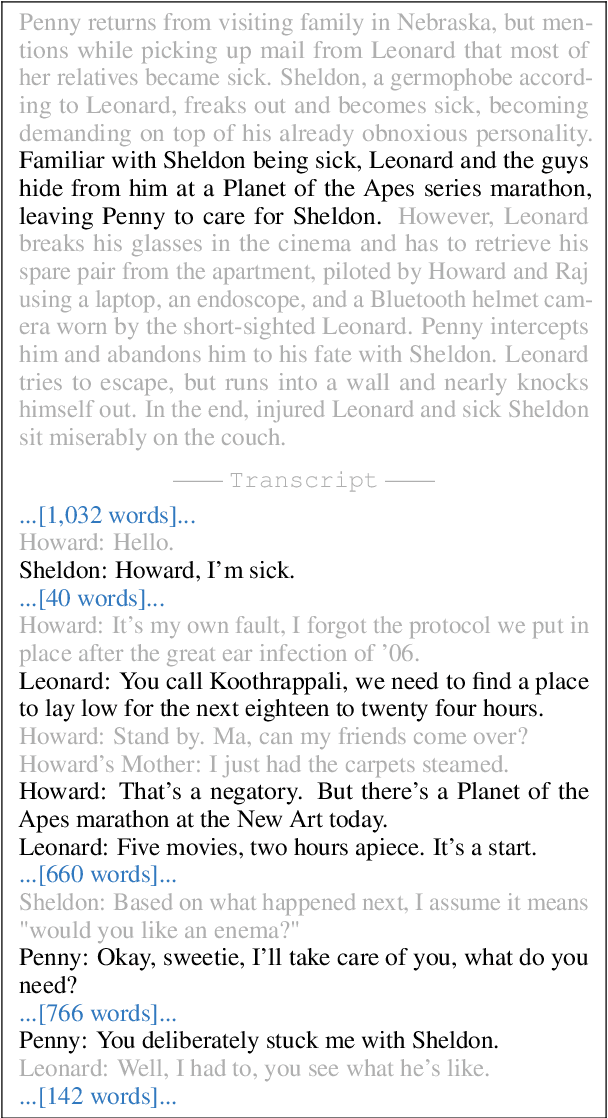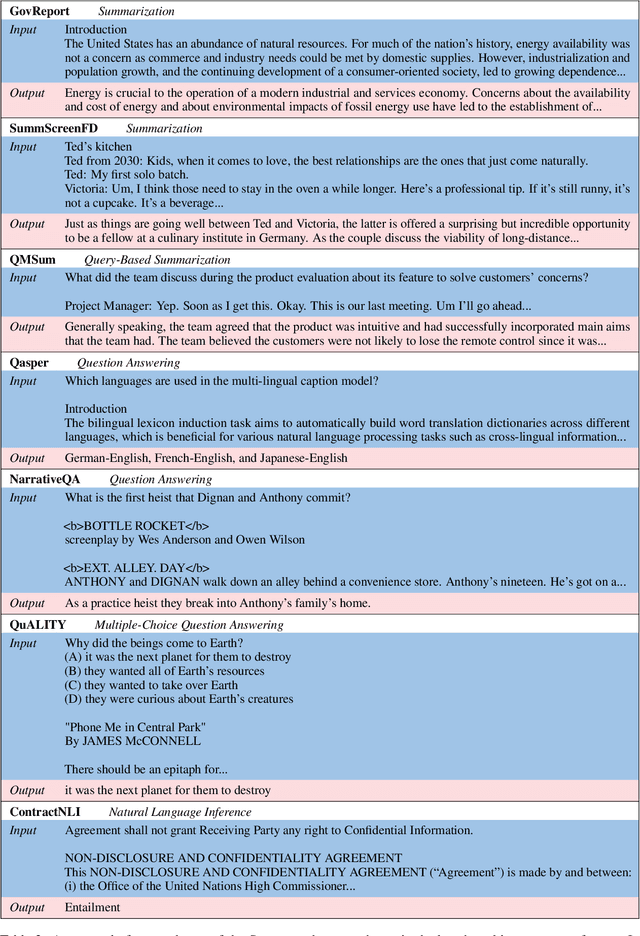Elad Segal
Shammie
Llama-Nemotron: Efficient Reasoning Models
May 02, 2025Abstract:We introduce the Llama-Nemotron series of models, an open family of heterogeneous reasoning models that deliver exceptional reasoning capabilities, inference efficiency, and an open license for enterprise use. The family comes in three sizes -- Nano (8B), Super (49B), and Ultra (253B) -- and performs competitively with state-of-the-art reasoning models such as DeepSeek-R1 while offering superior inference throughput and memory efficiency. In this report, we discuss the training procedure for these models, which entails using neural architecture search from Llama 3 models for accelerated inference, knowledge distillation, and continued pretraining, followed by a reasoning-focused post-training stage consisting of two main parts: supervised fine-tuning and large scale reinforcement learning. Llama-Nemotron models are the first open-source models to support a dynamic reasoning toggle, allowing users to switch between standard chat and reasoning modes during inference. To further support open research and facilitate model development, we provide the following resources: 1. We release the Llama-Nemotron reasoning models -- LN-Nano, LN-Super, and LN-Ultra -- under the commercially permissive NVIDIA Open Model License Agreement. 2. We release the complete post-training dataset: Llama-Nemotron-Post-Training-Dataset. 3. We also release our training codebases: NeMo, NeMo-Aligner, and Megatron-LM.
Nemotron-H: A Family of Accurate and Efficient Hybrid Mamba-Transformer Models
Apr 10, 2025Abstract:As inference-time scaling becomes critical for enhanced reasoning capabilities, it is increasingly becoming important to build models that are efficient to infer. We introduce Nemotron-H, a family of 8B and 56B/47B hybrid Mamba-Transformer models designed to reduce inference cost for a given accuracy level. To achieve this goal, we replace the majority of self-attention layers in the common Transformer model architecture with Mamba layers that perform constant computation and require constant memory per generated token. We show that Nemotron-H models offer either better or on-par accuracy compared to other similarly-sized state-of-the-art open-sourced Transformer models (e.g., Qwen-2.5-7B/72B and Llama-3.1-8B/70B), while being up to 3$\times$ faster at inference. To further increase inference speed and reduce the memory required at inference time, we created Nemotron-H-47B-Base from the 56B model using a new compression via pruning and distillation technique called MiniPuzzle. Nemotron-H-47B-Base achieves similar accuracy to the 56B model, but is 20% faster to infer. In addition, we introduce an FP8-based training recipe and show that it can achieve on par results with BF16-based training. This recipe is used to train the 56B model. All Nemotron-H models will be released, with support in Hugging Face, NeMo, and Megatron-LM.
FFN Fusion: Rethinking Sequential Computation in Large Language Models
Mar 24, 2025Abstract:We introduce FFN Fusion, an architectural optimization technique that reduces sequential computation in large language models by identifying and exploiting natural opportunities for parallelization. Our key insight is that sequences of Feed-Forward Network (FFN) layers, particularly those remaining after the removal of specific attention layers, can often be parallelized with minimal accuracy impact. We develop a principled methodology for identifying and fusing such sequences, transforming them into parallel operations that significantly reduce inference latency while preserving model behavior. Applying these techniques to Llama-3.1-405B-Instruct, we create Llama-Nemotron-Ultra-253B-Base (Ultra-253B-Base), an efficient and soon-to-be publicly available model that achieves a 1.71X speedup in inference latency and 35X lower per-token cost while maintaining strong performance across benchmarks. Through extensive experiments on models from 49B to 253B parameters, we demonstrate that FFN Fusion becomes increasingly effective at larger scales and can complement existing optimization techniques like quantization and pruning. Most intriguingly, we find that even full transformer blocks containing both attention and FFN layers can sometimes be parallelized, suggesting new directions for neural architecture design.
Training Vision-Language Models with Less Bimodal Supervision
Nov 01, 2022Abstract:Standard practice in pretraining multimodal models, such as vision-language models, is to rely on pairs of aligned inputs from both modalities, for example, aligned image-text pairs. However, such pairs can be difficult to obtain in low-resource settings and for some modality pairs (e.g., structured tables and images). In this work, we investigate the extent to which we can reduce the reliance on such parallel data, which we term \emph{bimodal supervision}, and use models that are pretrained on each modality independently. We experiment with a high-performing vision-language model, and analyze the effect of bimodal supervision on three vision-language tasks. We find that on simpler tasks, such as VQAv2 and GQA, one can eliminate bimodal supervision completely, suffering only a minor loss in performance. Conversely, for NLVR2, which requires more complex reasoning, training without bimodal supervision leads to random performance. Nevertheless, using only 5\% of the bimodal data (142K images along with their captions), or leveraging weak supervision in the form of a list of machine-generated labels for each image, leads to only a moderate degradation compared to using 3M image-text pairs: 74\%$\rightarrow$$\sim$70\%. Our code is available at https://github.com/eladsegal/less-bimodal-sup.
Beyond the Imitation Game: Quantifying and extrapolating the capabilities of language models
Jun 10, 2022Abstract:Language models demonstrate both quantitative improvement and new qualitative capabilities with increasing scale. Despite their potentially transformative impact, these new capabilities are as yet poorly characterized. In order to inform future research, prepare for disruptive new model capabilities, and ameliorate socially harmful effects, it is vital that we understand the present and near-future capabilities and limitations of language models. To address this challenge, we introduce the Beyond the Imitation Game benchmark (BIG-bench). BIG-bench currently consists of 204 tasks, contributed by 442 authors across 132 institutions. Task topics are diverse, drawing problems from linguistics, childhood development, math, common-sense reasoning, biology, physics, social bias, software development, and beyond. BIG-bench focuses on tasks that are believed to be beyond the capabilities of current language models. We evaluate the behavior of OpenAI's GPT models, Google-internal dense transformer architectures, and Switch-style sparse transformers on BIG-bench, across model sizes spanning millions to hundreds of billions of parameters. In addition, a team of human expert raters performed all tasks in order to provide a strong baseline. Findings include: model performance and calibration both improve with scale, but are poor in absolute terms (and when compared with rater performance); performance is remarkably similar across model classes, though with benefits from sparsity; tasks that improve gradually and predictably commonly involve a large knowledge or memorization component, whereas tasks that exhibit "breakthrough" behavior at a critical scale often involve multiple steps or components, or brittle metrics; social bias typically increases with scale in settings with ambiguous context, but this can be improved with prompting.
SCROLLS: Standardized CompaRison Over Long Language Sequences
Jan 10, 2022



Abstract:NLP benchmarks have largely focused on short texts, such as sentences and paragraphs, even though long texts comprise a considerable amount of natural language in the wild. We introduce SCROLLS, a suite of tasks that require reasoning over long texts. We examine existing long-text datasets, and handpick ones where the text is naturally long, while prioritizing tasks that involve synthesizing information across the input. SCROLLS contains summarization, question answering, and natural language inference tasks, covering multiple domains, including literature, science, business, and entertainment. Initial baselines, including Longformer Encoder-Decoder, indicate that there is ample room for improvement on SCROLLS. We make all datasets available in a unified text-to-text format and host a live leaderboard to facilitate research on model architecture and pretraining methods.
Did Aristotle Use a Laptop? A Question Answering Benchmark with Implicit Reasoning Strategies
Jan 06, 2021



Abstract:A key limitation in current datasets for multi-hop reasoning is that the required steps for answering the question are mentioned in it explicitly. In this work, we introduce StrategyQA, a question answering (QA) benchmark where the required reasoning steps are implicit in the question, and should be inferred using a strategy. A fundamental challenge in this setup is how to elicit such creative questions from crowdsourcing workers, while covering a broad range of potential strategies. We propose a data collection procedure that combines term-based priming to inspire annotators, careful control over the annotator population, and adversarial filtering for eliminating reasoning shortcuts. Moreover, we annotate each question with (1) a decomposition into reasoning steps for answering it, and (2) Wikipedia paragraphs that contain the answers to each step. Overall, StrategyQA includes 2,780 examples, each consisting of a strategy question, its decomposition, and evidence paragraphs. Analysis shows that questions in StrategyQA are short, topic-diverse, and cover a wide range of strategies. Empirically, we show that humans perform well (87%) on this task, while our best baseline reaches an accuracy of $\sim$66%.
Tag-based Multi-Span Extraction in Reading Comprehension
Oct 02, 2019



Abstract:With models reaching human performance on many popular reading comprehension datasets in recent years, a new dataset, DROP, introduced questions that were expected to present a harder challenge for reading comprehension models. Among these new types of questions were "multi-span questions", questions whose answers consist of several spans from either the paragraph or the question itself. Until now, only one model attempted to tackle multi-span questions as a part of its design. In this work, we suggest a new approach for tackling multi-span questions, based on sequence tagging, which differs from previous approaches for answering span questions. We show that our approach leads to an absolute improvement of 29.7 EM and 15.1 F1 compared to existing state-of-the-art results, while not hurting performance on other question types. Furthermore, we show that our model slightly eclipses the current state-of-the-art results on the entire DROP dataset.
 Add to Chrome
Add to Chrome Add to Firefox
Add to Firefox Add to Edge
Add to Edge